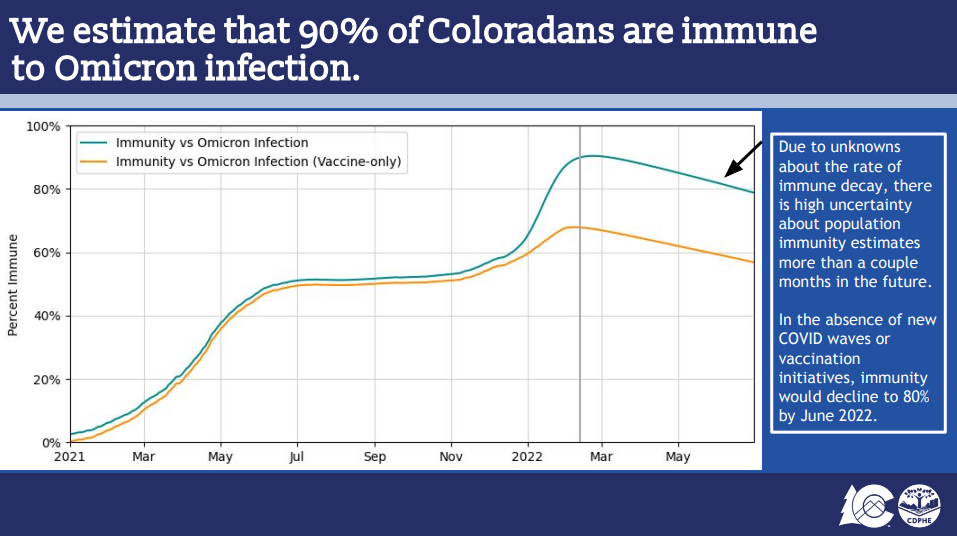DENVER (KDVR) — The latest modeling data from the state indicates 90% of Coloradans have some level of immunity to the COVID-19 omicron variant, between natural immunity and vaccinations.
Colorado is one of the top 10 states in the country for vaccination rates and the record level of transmission during the omicron wave only fueled a more robust immunity in the state.
“We’re at very high levels of immunity in the state right now,” State Epidemiologist Dr. Rachel Herlihy said during a Thursday briefing. “That’s obviously great news for us moving forward, meaning that we anticipate the infection numbers to continue to decline over time.”
But just because those levels are high now, doesn’t mean they will stay that way forever.
“You do see these numbers drift down over time, the projections in this figure go out to June,” Herlihy said. “We do see that evidence of waning immunity in the projections. We will see this slow decrease in immunity over time.”

Herlihy said all these models are subject to change if a potential new variant arises and shows a stronger capability to reinfect and breakthrough vaccine protection.
Originally, a modeling report released in January estimated 80% of Coloradans will have this immunity come mid-February. Herlihy explained that since that time, the team has been able to collect more data for a more accurate picture.
“The modeling team is constantly updating the model to account for the latest information that’s available in the literature about duration of immunity, level of protection, those sorts of things,” Herlihy said.
Herlihy said another factor is more COVID hospitalizations than anticipated in the January report, specifically that Colorado didn’t see a decrease in hospitalizations as quickly as projected, resulting in stronger community immunity levels.
The modeling for protection against severe disease is even higher, suggesting protection in the mid-90s or even closer to 100%.

While those high levels of omicron immunity are encouraging, Herlihy cautions that the estimate covers the entire state of Colorado, which has communities that could potentially have higher or lower levels of protection.
“We know communities are not uniform across the state, so we are going to have communities where there are pockets of lower vaccination rates or places where fewer infections occurred,” Herlihy said.
Herlihy also mentioned that specific communities have populations, like long-term care facilities, where immunity could decrease faster or risk could be greater.
“We still know there are vulnerable people and there can continue to be pockets of transmission and outbreaks going forward,” Herlihy said.
Watch the full CDPHE COVID-19 update on FOX31 NOW.
